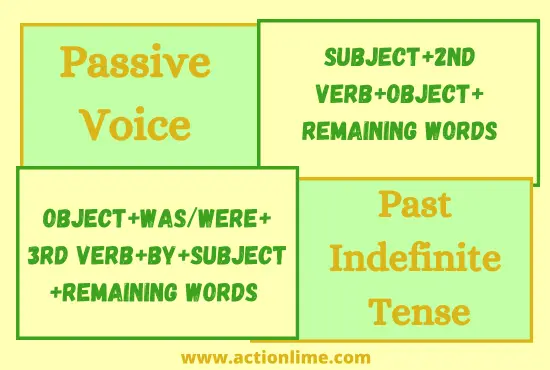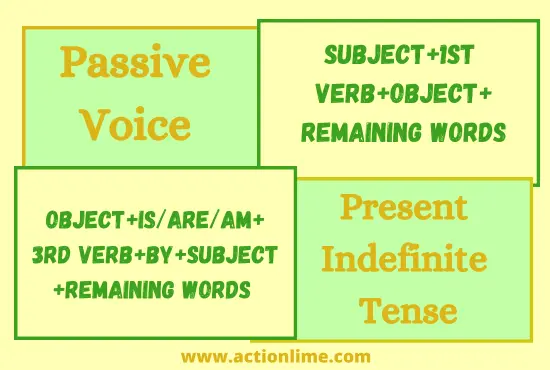Adverbs of Place| Definition, Use, Examples
Adverbs of Place can be defined as a word or a group of words that are used to tell at which place, the action has occurred. Following is the list of Adverbs of Place that are used to tell where an action occurs.
- Here
- There
- Everywhere
- Somewhere
- Anywhere
- Nowhere
- Up
- Down
- Inside
- Outside
- Above
- Below
- Nearby
- Far
- Away
- Home
- In
- Out
- Ahead
- Behind
- Between
- Over
- Under
- Along
- Near
“Here” As An Adverb of Place
“Here” can be used as an Adverb of Place with the meaning of “in this place”. So, any action that happens near something, can be explained with the help of “Here” as an Adverb.
Examples of “Here” As An Adverb of Place
Following are some examples in which “Here” is used as an Adverb of Place.
- Please come over here so we can discuss the details.
- The concert will be held right here in the city center.
- She set her bag down here, next to the chair.
- The instructions are right here on the screen.
- I was looking for the keys, but I found them here on the kitchen counter.
“There” As An Adverb of Place
“That” can be used as an Adverb of Place with the meaning of “in that place”. So, any action that has occurred at some specific place can be explained with the help of “there” as an Adverb.
Examples of “There” As An Adverb of Place
Following are some examples in which “There” is used as an Adverb of Place.
- The children are playing there in the park.
- I left my book over there on the table.
- The restaurant we want to visit is right there on Main Street.
- We need to go there to pick up the package.
- I saw a beautiful painting there in the gallery.
“Everywhere” As An Adverb of Place
“Everywhere” can be used as an Adverb with the meaning of “in all places”. So, actions that can be happened at any place, can be expressed with the help of “everywhere” as an Adverb.
Examples of “Everywhere” As An Adverb of Place
Following are some examples in which “Everywhere” is used as an Adverb of Place.
- The flowers were blooming everywhere in the garden.
- After the party, confetti was scattered everywhere in the room.
- We looked everywhere for the missing keys but couldn’t find them.
- Tourists can be seen everywhere during the summer season.
- The smell of fresh bread seemed to be coming from everywhere in the bakery.
“Somewhere” As An Adverb of Place
“Somewhere” can be used as an Adverb of Place with the meaning of “in some place”. So, actions that occur at some unspecified place can be explained with the help of “somewhere” as an Adverb.
Examples of “Somewhere” As An Adverb of Place
Following are some examples in which “Somewhere” is used as an Adverb of Place.
- I left my phone somewhere in the house; I just can’t remember where.
- We should go somewhere quiet to discuss the project.
- She mentioned that she would be staying somewhere near the beach.
- The cat must be hiding somewhere because I can’t find her.
- There’s a lovely café somewhere around this corner that we could try.
“Anywhere” As An Adverb of Place
“Anywhere” can be used as an Adverb of Place with the meaning of “in any place”. Any action that can occur at any specified place, can be expressed with the help of “anywhere” as an Adverb.
Examples of “Anywhere” As An Adverb of Place
Following are some examples in which “Anywhere” is used as an Adverb of Place.
- You can sit anywhere you like; there’s plenty of room.
- I haven’t been anywhere exciting this year.
- We could go anywhere you want for vacation.
- Is there anywhere you’d like to go for dinner tonight?
- I don’t think there’s anywhere left to search; we’ve looked everywhere.
“Nowhere” As An Adverb of Place
“Nowhere” can be used as an Adverb of Place with the meaning of “in no place”. So, actions that have no place, can be expressed with the help of “Nowhere” as an Adverb.
Examples of “Nowhere” As An Adverb of Place
Following are some examples in which “Nowhere” is used as an Adverb of Place.
- I searched for my wallet everywhere but found it nowhere.
- The road seemed to lead nowhere, so we turned back.
- His explanations went nowhere, leaving us just as confused as before.
- We looked for a good restaurant but found nowhere suitable.
- The treasure map led us to nowhere, with no sign of hidden riches.
“Up” As An Adverb of Place
“Up” can be used as an Adverb of Place with the meaning of “to a higher place”. So, any action that has occurred at someplace that is positioned upward, can be expressed with the help of “Up” as an Adverb.
Examples of “Up” As An Adverb of Place
Following are some examples in which “Up” is used as an Adverb of Place.
- The kids climbed up the tree to get a better view.
- He walked up the stairs to the top floor of the building.
- The hot air balloon floated up into the sky.
- She held the lantern up so we could see better in the dark.
- The cat jumped up onto the windowsill to watch the birds outside.
“Down” As An Adverb of Place
“Down” can be used as an Adverb of Place with the meaning of “to a lower place”. So, any action that has occurred at someplace that positioned downward, can be expressed with the help of “down” as an Adverb.
Examples of “Down” As An Adverb of Place
Following are some examples in which “Down” is used as an Adverb of Place.
- She walked down the hill to get to the park.
- The cat slipped down from the shelf and landed softly on the floor.
- He looked down from the balcony and admired the view of the city.
- The children slid down the slide at the playground.
- We need to go down to the basement to find the old records.
“Inside” As An Adverb of Place
“Inside” can be used as an Adverb of Place with the meaning of “within something”. So, any action that has occurred within the boundaries of something, can be explained with the help of “Inside” as an Adverb.
Examples of “Inside” As An Adverb of Place
Following are some examples in which “Inside” is used as an Adverb of Place.
- The dog is waiting inside for us to come back.
- We decided to stay inside because it was raining heavily.
- The keys are lying inside the drawer in the kitchen.
- She found her lost book inside her backpack.
- The kids played inside the house while their parents chatted outside.”
“Outside” As An Adverb of Place
“Outside” can be used as an Adverb of Place with the meaning of “outside something”. So, actions that occur outside of the boundaries of something, can be explained with the help of “outside” as an Adverb.
Examples of “Outside” As An Adverb of Place
Following are some examples in which “Outside” is used as an Adverb of Place.
- The children played outside in the backyard all afternoon.
- I left my coat outside on the porch by mistake.
- We decided to eat outside on the patio for a change.
- The noise from the construction site can be heard outside the office.
- The cat loves to sit outside by the window and watch the birds.”
“Above” As An Adverb of Place
“Above” can be used as an Adverb of Place with the meaning of “at a higher level or layer”. So, anything that occurs at some place that is higher in respect to some other place, can be expressed with the help of “Above” as an Adverb.
Examples of “Above” As An Adverb of Place
Following are some examples in which “Above” is used as an Adverb of Place.
- The airplane flew above the clouds.
- She hung the picture frame above the fireplace.
- The birds were soaring high above the trees.
- A faint light glowed above in the attic window.
- The sun was setting above the horizon, painting the sky with colors.
“Below” As An Adverb of Place
“Below” can be used as an Adverb of Place with the meaning of “at a lower level or layer”. So, any action that occurs at some place that is lower to some other place, can be expressed with the help of “below” as an Adverb.
Examples of “Below” As An Adverb of Place
Following are some examples in which “Below” is used as an Adverb of Place.
- The fish swam below the surface of the water.
- He looked down and saw the city lights twinkling below.
- The temperature dropped below freezing last night.
- The basement is located directly below the main floor of the house.
- She placed the vase on the shelf below the painting.
“Nearby” As An Adverb of Place
“Nearby” can be used as an Adverb of Place with the meaning of “close to here”. This means that any action that occurs in proximity to something can be explained with the help of “Nearby” as an Adverb.
Examples of “Nearby” As An Adverb of Place
Following are some examples in which “Nearby” is used as an Adverb of Place.
- There’s a coffee shop nearby if you want to grab a drink.
- We found a nice park nearby to have a picnic.
- The hotel is located nearby, just a few blocks from the conference center.
- I noticed a small grocery store nearby where we can pick up some supplies.
- The children ran to a playground nearby after school.”
“Far” As An Adverb of Place
“Far” is used as an Adverb of Place with the meaning of “at a great distance”. So, any action that occurs over a large expanse of space can be expressed with the help of “far” as an Adverb.
Examples of “Far” As An Adverb of Place
Following are some examples in which “Far” is used as an Adverb of Place.
- The beach is far from our hotel, so we need to drive there.
- She could see the mountains far in the distance.
- The lost dog wandered far from home before being found.
- His house is too far away for us to visit regularly.
- The restaurant we’re looking for is far from here, about an hour’s drive.”
“Away” As An Adverb of Place
“Away” can be used as an Adverb of Place with the meaning of “to or at a distance”. So, any action that occurs at a distance from a particular place, can be expressed with the help of “away” as an Adverb.
Examples of “Away” As An Adverb of Place
Following are some examples in which “Away” is used as an Adverb of Place.
- They live far away from the city, in a quiet rural area.
- She walked away from the crowd to find some peace.
- The cat ran away when it heard the loud noise.
- The car is parked a few blocks away from the restaurant.
- He looked out the window and saw the ship drifting away into the horizon.
“Home” As An Adverb of Place
“Home” is used as an Adverb of Place with the meaning of “to or at one’s home”. So, any action that has some relation to one’s home/house, can be expressed with the help of “home” as an Adverb of Place.
Examples of “Home” As An Adverb of Place
Following are some examples in which “Home” is used as an Adverb of Place.
- After the long trip, we were finally heading home.
- He felt more comfortable at home than anywhere else.
- She went home early from work because she wasn’t feeling well.
- The children rushed home after school to play with their new toys.
- Even though he traveled a lot, he always looked forward to coming home.
“In” As An Adverb of Place
“In” can be used as an Adverb of Place with the meaning of “within a space”. So, any action that occurs within something, can be expressed with the help of “in” as an Adverb.
Examples of “In” As An Adverb of Place
Following are some examples in which “In” is used as an Adverb of Place.
- The cat is hiding in the bushes.
- She found the missing keys in the drawer.
- The kids are playing in the backyard.
- There’s a beautiful view from the window in the living room.
- The documents are stored in the file cabinet in the office.
“Out” As An Adverb of Place
“Out” can be used as an Adverb of Place with the meaning of “away from the inside”. This means that any action that occurs out or away from something, can be expressed with the help of “out” as an Adverb.
Examples of “Out” As An Adverb of Place
Following are some examples in which “Out” is used as an Adverb of Place.
- The children ran out into the yard to play.
- She looked out the window to see if it was still raining.
- He stepped out of the car and into the cold air.
- The cat jumped out of the box and onto the table.
- We decided to eat out at a restaurant instead of cooking at home.”
“Ahead” As An Adverb of Place
“Ahead” can be used as an Adverb of Place with the meaning of “in the forward direction”. So, any action that occurs in the lead of something can be expressed with the help of “Ahead” as an Adverb.
Examples of “Ahead” As An Adverb of Place
Following are some examples in which “Ahead” is used as an Adverb of Place.
- The road ahead was clear and straight, perfect for driving.
- She could see the finish line ahead as she approached the end of the race.
- The trail ahead was steep and rugged, making the hike challenging.
- They planned to set up camp a few miles ahead on the hiking trail.
- The store is just ahead on the left, right after the intersection.”
“Behind” As An Adverb of Place
“Behind” can be used as an Adverb of Place with the meaning of “at the back of”. So, any action that occurs at or to the far side of something, can be expressed with the help of “Behind” as an Adverb of Place.
Examples of “Behind” As An Adverb of Place
Following are some examples in which “Behind” is used as an Adverb of Place.
- The garden is located just behind the house.
- She stood behind the curtain, waiting for her cue to come out.
- The car parked behind us honked as we were backing out.
- He noticed the old shed hidden behind the trees.
- The children were playing hide-and-seek and hid behind the sofa.”
“Between” As An Adverb of Place
“Between” can be used as an Adverb of Place with the meaning of “in the space separating two points or objects”. So, any action that occurs in or along the space separating two objects or regions, can be expressed with the help of “between” as an Adverb of Place.
Examples of “Between” As An Adverb of Place
Following are some examples in which “Between” is used as an Adverb of Place.
- The house is located between the two tall oak trees.
- The dog sat quietly between its owner and the guest.
- The park is situated between the downtown area and the residential neighborhoods.
- The treasure was buried between the rocks on the beach.
- She found the missing book between the couch cushions.”
“Over” As An Adverb of Place
“Over” can be used as an Adverb of Place with the meaning of “across a barrier or obstacle”. So, any action that occurs at someplace that is at a higher level or layer than any other place, can be expressed with the help of “over” as an Adverb.
Examples of “Over” As An Adverb of Place
Following are some examples in which “Over” is used as an Adverb of Place.
- The helicopter flew over the city, offering a stunning view from above.
- She reached up to grab the book from the shelf high up and over her head.
- The cat jumped over the fence and into the neighbor’s yard.
- A rainbow appeared over the mountains after the rainstorm.
- He looked over the edge of the bridge to see the river below.”
“Under” As An Adverb of Place
“Under” can be used as an Adverb of Place with the meaning of “beneath a surface or object”. So, any action that occurs directly below something, can be explained with the help of “Under” as an Adverb of Place.
Examples of “Under” As An Adverb of Place
Following are some examples in which “Under” is used as an Adverb of Place.
- The cat is hiding under the bed, away from the noise.
- The children played under the big oak tree in the yard.
- She looked under the table to find the lost pen.
- The river flows under the old stone bridge.
- He crouched down and peeked under the car to check for leaks.
“Along” As An Adverb of Place
“Along” can be used as an Adverb of Place with the meaning of “moving in a constant direction on a path”. So, any action that occurs on any horizontal line can be explained with the help of “Along” as an Adverb.
Examples of “Along” As An Adverb of Place
Following are some examples in which “Along” is used as an Adverb of Place.
- They strolled along the beach, enjoying the sunset.
- The path runs along the river, providing beautiful views.
- She walked along the corridor, looking for her classroom.
- The festival stalls were set up along the main street.
- He cycled along the trail through the forest.”
“Near” As An Adverb of Place
“Near” can be used as an Adverb of Place with the meaning of “close to”. So, any action that occurs at or to a short distance away from something, can be expressed with the help of “Near” as an Adverb.
Examples of “Near” As An Adverb of Place
Following are some examples in which “Near” is used as an Adverb of Place.
- The school is located near the park, making it easy for students to visit.
- She found a quiet spot near the river to read her book.
- The restaurant is near the downtown area, so it’s convenient for everyone.
- The cat settled near the fireplace to stay warm.
- We parked near the entrance to save time walking to the event.




